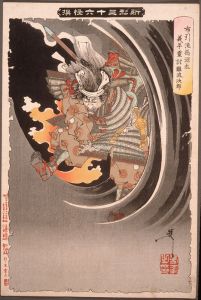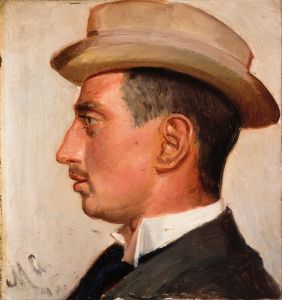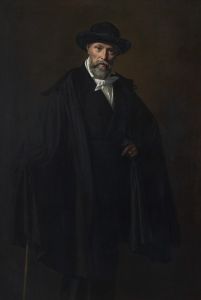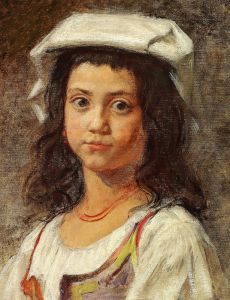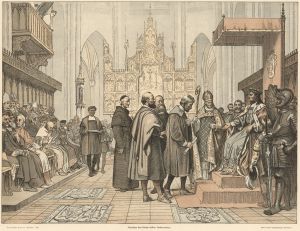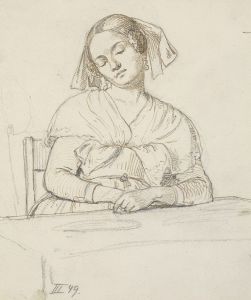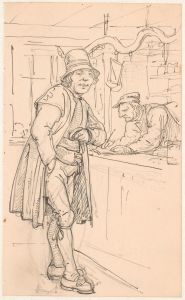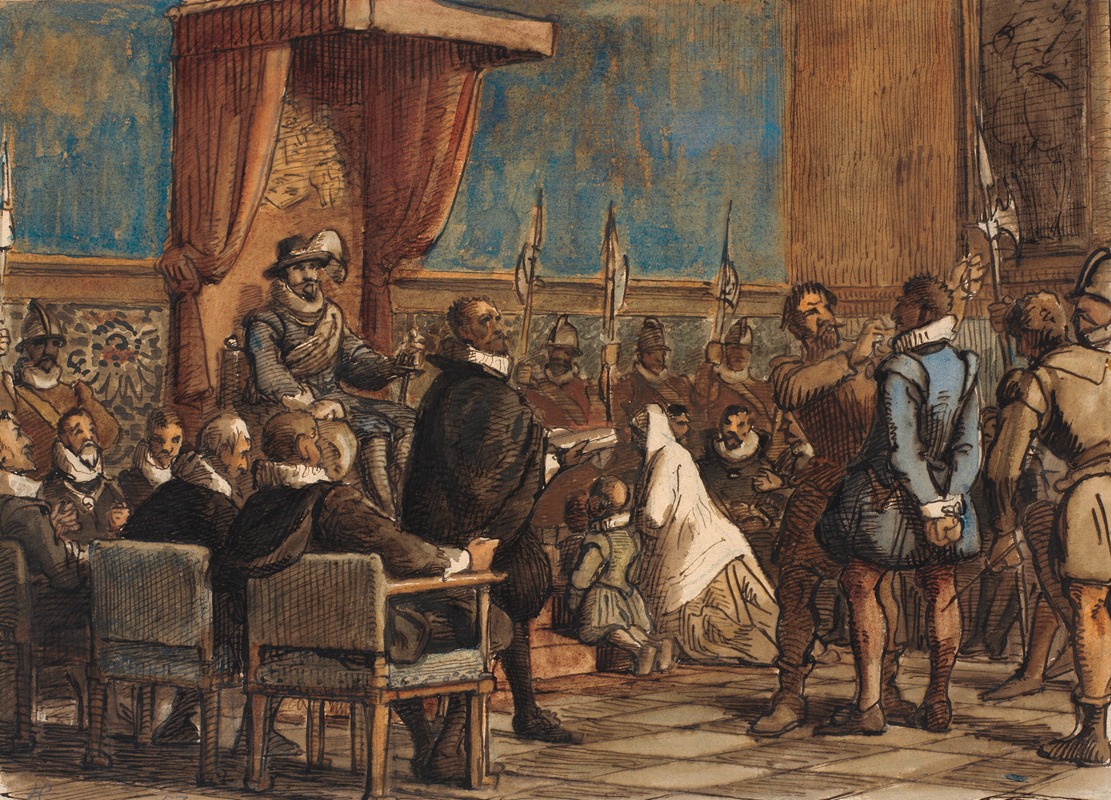
Chr. 4. Lader Bødlen Tage Ordenskæden Og Sværdet Fra Falskneren Christopher Rosenkrantz
A hand-painted replica of Wilhelm Marstrand’s masterpiece Chr. 4. Lader Bødlen Tage Ordenskæden Og Sværdet Fra Falskneren Christopher Rosenkrantz, meticulously crafted by professional artists to capture the true essence of the original. Each piece is created with museum-quality canvas and rare mineral pigments, carefully painted by experienced artists with delicate brushstrokes and rich, layered colors to perfectly recreate the texture of the original artwork. Unlike machine-printed reproductions, this hand-painted version brings the painting to life, infused with the artist’s emotions and skill in every stroke. Whether for personal collection or home decoration, it instantly elevates the artistic atmosphere of any space.
Wilhelm Marstrand's painting "Chr. 4. Lader Bødlen Tage Ordenskæden Og Sværdet Fra Falskneren Christopher Rosenkrantz" is a notable work by the Danish artist, who is renowned for his contributions to the Danish Golden Age of painting. Marstrand, born in 1810 and passing in 1873, was a prolific artist whose works often depicted historical and literary themes with a keen eye for detail and dramatic expression.
The title of the painting translates to "Christian IV Orders the Executioner to Take the Order Chain and Sword from the Forger Christopher Rosenkrantz." This artwork captures a dramatic moment in Danish history involving King Christian IV, who reigned from 1588 to 1648, and Christopher Rosenkrantz, a nobleman accused of forgery.
The painting illustrates a significant event where King Christian IV is depicted commanding the executioner to strip Rosenkrantz of his honors, symbolized by the order chain and sword. This act of stripping a nobleman of his titles and honors was a severe punishment, reflecting the gravity of Rosenkrantz's crime and the king's commitment to justice and integrity within his realm.
Marstrand's work is characterized by its meticulous attention to historical accuracy and emotional intensity. The composition of the painting is designed to draw the viewer's eye to the central figures of the king, the executioner, and Rosenkrantz, creating a powerful visual narrative. The expressions and body language of the characters convey a sense of drama and tension, emphasizing the seriousness of the moment.
The historical context of the painting is rooted in the strict legal and moral codes of the time. Forgery was considered a serious offense, especially among the nobility, as it undermined the social and economic stability of the kingdom. King Christian IV's decision to publicly punish Rosenkrantz served as a warning to others and reinforced the rule of law.
Wilhelm Marstrand's ability to capture such a poignant moment in Danish history is a testament to his skill as an artist. His works often explored themes of justice, morality, and human emotion, making him a key figure in the Danish art scene of the 19th century. Marstrand's paintings are celebrated for their dynamic compositions, rich color palettes, and the ability to convey complex narratives through visual art.
"Chr. 4. Lader Bødlen Tage Ordenskæden Og Sværdet Fra Falskneren Christopher Rosenkrantz" remains an important piece within Marstrand's oeuvre, reflecting his mastery of historical painting and his contribution to the cultural heritage of Denmark. The painting is a valuable historical document, offering insight into the legal and social practices of the time, as well as the artistic trends that shaped the Danish Golden Age.
In summary, Wilhelm Marstrand's painting is a significant historical and artistic work that captures a dramatic moment in Danish history with precision and emotional depth. It stands as a testament to Marstrand's talent and his ability to bring historical events to life through his art.






